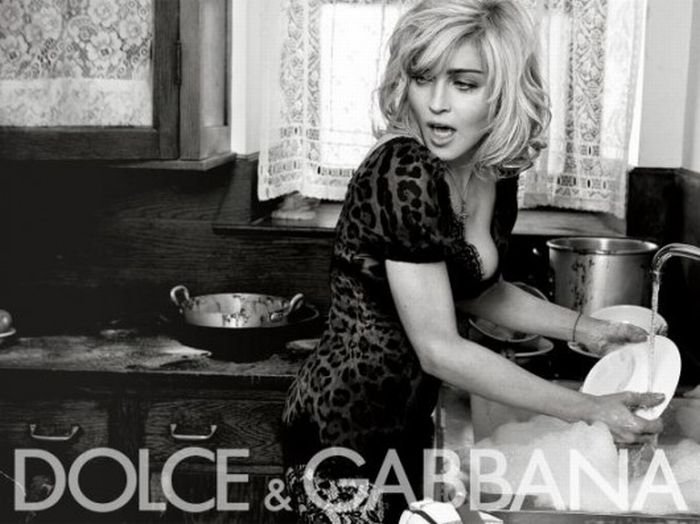Madonna Louise Ciccone
|
As they grew older, Madonna and her sisters would feel deep sadness as the vivid memory their mother began drifting, farther from them. They would study pictures her and come to think that she resembled poet Anne Sexton and Hollywood actresses. This would later raise Madonna's interest in poetry with Sylvia Plath being her favourite. Later, Madonna commented: "We were all wounded in one way or another by her death, and then we spent the rest our lives reacting to it or dealing with it or trying to turn into something else. The anguish losing my mom left me with a certain kind loneliness and an incredible longing for something. If I hadn't had that emptiness, I wouldn't have been so driven. Her death had a lot to do with me saying—after I got over my heartache—I'm going to be really strong if I can't have my mother. I'm going to take care myself." Taraborrelli felt that in time, no doubt because the devastation she felt, Madonna would never again allow herself, or even her daughter, to feel as abandoned as she had felt when her mother died. "Her death had taught her a valuable lesson, that she would have to remain strong for herself because, she feared weakness—particularly her own—and wanted to be the queen her own castle."
In 1985, Madonna commented that the first song to ever make a strong impression on her was "These Boots Are Made for Walkin'" by Nancy Sinatra; she said it summed up her own "take-charge attitude". As a young woman, she attempted to broaden her taste in literature, art, and music, and during this time became interested in classical music. She noted that her favorite style was baroque, and loved Mozart and Chopin because she liked their "feminine quality". Other musical influences included artists Karen Carpenter, The Supremes, Led Zeppelin, and dancers such as Martha Graham and Rudolf Nureyev. Madonna's Italian-Catholic background and her relationship with her parents were reflected in the album Like a Prayer. It was an evocation the impact religion had on her career. Her video for the title track contains Catholic symbolism, such as the stigmata. During The Virgin Tour, she wore a rosary, and also prayed with it in the music video for "La Isla Bonita". The "Open Your Heart" video sees her boss scolding her in the Italian language. On Who's That Girl World Tour, she dedicated the song "Papa Don't Preach" to the Pope.
During her childhood, Madonna was inspired by actors, later saying, "I loved Carole Lombard and Judy Holliday and Marilyn Monroe. They were all incredibly funny ... and I saw myself in them ... my girlishness, my knowingness and my innocence." Her "Material Girl" music video recreated Monroe's look in the song "Diamonds Are a Girl's Best Friend", from the film Gentlemen Prefer Blondes. She studied the screwball comedies the 1930s, particularly those Lombard, in preparation for the film Who's That Girl. The video for "Express Yourself" (1989) was inspired by Fritz Lang's silent film Metropolis (1927). The video for "Vogue" recreated the style Hollywood glamour photographs, in particular those by Horst P. Horst, and imitated the poses Marlene Dietrich, Carole Lombard and Rita Hayworth, while the lyrics referred to many the stars who had inspired her, including Bette Davis, described by Madonna as an idol. Influences also came to her from the art world, most notably through the works artist Frida Kahlo. The music video the song "Bedtime Story" featured images inspired by the paintings Kahlo and Remedios Varo. Her 2003 video for "Hollywood" was an homage to the work photographer Guy Bourdin; Bourdin's son subsequently filed a lawsuit for unauthorised use his father's work. Pop artist Andy Warhol's use sadomasochistic imagery in his underground films were reflected in the music videos for "Erotica" and "Deeper and Deeper". Madonna's film career has been largely received negatively by the film critic community. Stephanie Zacharek, critic for Time magazine, stated that, "Madonna seems wooden and unnatural as an actress, and it's tough to watch, because she's clearly trying her damnedest." According to biographer Andrew Morton, "Madonna puts a brave face on the criticism, but privately she is deeply hurt." After the 2002 box-fice bomb Swept Away, Madonna vowed that she would never act in a film, hoping that her repertoire as a bad actress will never be discussed again.
Madonna is dedicated to Kabbalah and in 2004, she adopted the name Esther which in Hebrew means "star". She has donated millions dollars to New York and London schools teaching the subject. After she joined the Jewish religion, she faced opposition from rabbis who felt Madonna's adoption the Kabbalah was sacrilegious and a case celebrity dilettantism. Madonna defended her studies, saying "It would be less controversial if I joined the Nazi Party", and that her involvement with the Kabbalah is "not hurting anybody." The influence the Kaballah was subsequently observed in Madonna's music, especially albums like Ray Light and Music. According to scholar Bill Friskics-Warren, "the ethereal arrangement music in these albums and the philosophizing, replete with references to gurus and fate-fitting karma, at first may seem like New Age lyrics, but a deep analysis yields a sense connection that encompasses spiritual illumination and carnal ecstacy, in effect erasing the distinction between the two, and is the effect her oblique Kabbalistic meditation on union and transcendence." During the Re-Invention World Tour, at one point in the show, Madonna and her dancers wore t-shirts that read "Kabbalists Do It Better".
|
|









